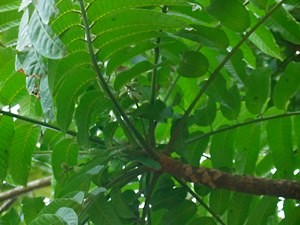Galip nut
(Canarium indicum)

Description
Canarium indicum, known as galip nut, is a mainly dioecious tree native in eastern Melanesia. It is usually found in rainforests, secondary forests, old garden areas, around villages and settlements.It is also used as a shade tree, as a windbreak and in agroforestry. Canarium is important in the world food system as it can be used as a food and timber source, in traditional medicine, intercropping and agroforestry. Canarium indicum has two recognised botanical varieties: indicum and platycerioideum. The latter is uncommon and grows in Indonesia and in West Papua New Guinea. It has larger leaves and fruits than the indicum variety. In Vanuatu, however, there are at least five cultivars known that differ in shape, size, fruit color at maturation and mesocarp color and texture. Canarium is native in eastern Indonesia, Papua New Guinea, the Solomon Islands, and Vanuatu. Besides Melanesia, it is also cultivated in Fiji, in the North of Australia, Taiwan, Hawaii, Honduras and Trinidad. Usually, it is found in rainforests, secondary forests, old garden areas, around villages and settlements and is also used as a shade tree, as a windbreak and in agroforestry. Nuts have been important in the diet in Papua New Guinea for about 6’000 years. In 2007, approximately one third of the household grew Canarium. In the Solomon Islands, they are important in traditional society, with the ownership of trees being a measure of wealth. Canarium indicum is an evergreen, large tree with a fluted, buttressed trunk, heavy lateral branches and a dense canopy. Mature trees are usually 20–30 m (70–100 ft) tall but can grow up to 40 m (130 ft) in height. They naturally grow between 200 and 300 kg/m3 in density. Trunk diameter is between 1–1.5 m (3.3–4.9 ft) and can attain 30 m (100 ft) in canopy diameter. Canarium prefers medium to heavy textured soils, like loams, sandy clay loams, clays, clay loams and sandy clays of moderate to high soil fertility. Well-drained to slightly impeded drainage with good organic matter content are favored. A pH of 4.5-6.5 is favoured but it can tolerate pH levels up to 7.4. However, Canarium cannot grow on shallow, infertile or saline soils. Even if young trees need to be partially shaded, adult trees prefer full sun situations but also tolerate 20-70% shade.
Taxonomic tree:







